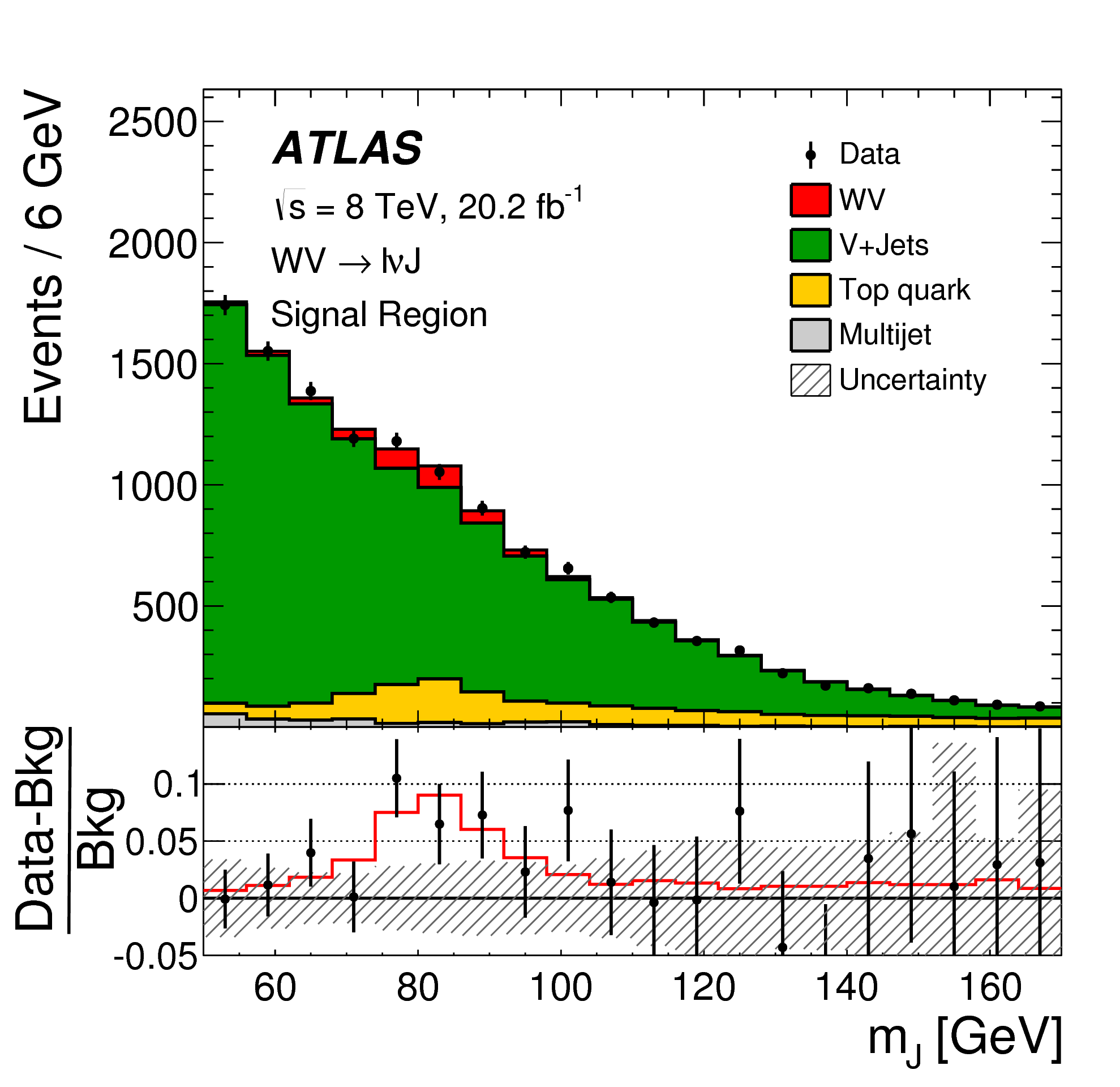Standard Model@UCL
The combination of electroweak unification and Quantum ChromoDynamics (QCD), usually referred to as the Standard Model of particle physics, is the most powerful scientific theory ever developed, being able to describe with unprecedented precision millions of experimental datapoints measured over decades of particle physics, and having successfully predicted the existence of the Higgs boson. The unprecedented centre-of-mass energy of the LHC allows the Standard Model (SM) to be extensively explored above the electroweak symmetry breaking scale for the first time, in a huge variety of final states. The UCL group makes fundamental contributions to this work at ATLAS, with an emphasis on making model-independent measurements of well-motivated final states in well-defined fiducial regions. Our current activities cover:
- Measuring the production of jets (including jets from heavy quarks), and jet substructure
- Measurement of the tau-pair production cross section
- The interpretation of these and other measurements to set model-independent constraints on physics beyond the SM (see also our exotic physics page and Contur)
- Model-independent measurement of missing energy
- Measurement of the production of vector bosons in association with jets
- Measurement of the production of vector bosons in their hadronic decay modes
- Electroweak production of Z bosons
- Measurement of the differential cross section as a function of the four-lepton invariant mass
- First measurements of charged particle multiplicities in early LHC data
Key Academics
Jon ButterworthMario Campanelli
Leadership positions
Jon ButterworthStandard Model Group Convener 2010-2012Mario Campanelli Jets subgroup Convener 2015-2016, PDF convener 2017-2018
Emily Nurse Soft-QCD Physics subgroup convenor 2010-2011
Selected References
- ATLAS Collaboration, Differential cross-sections for events with missing transverse momentum and jets measured with the ATLAS detector in 13 TeV proton-proton collisions arXiv:2403.02793
- ATLAS Collaboration, Measurements of differential cross-sections in four-lepton events in 13 TeV proton-proton collisions with the ATLAS detector JHEP 07 (2021) 005 (see also JHEP 04 (2019) 048)
- PDF4LHC working groups, The PDF4LHC21 combination of global PDF fits for the LHC Run III J.Phys.G 49 (2022) 8, 080501 (see also J. Phys. G: Nucl. Part. Phys. 43 023001 (2016), arXiv:1101.0538 [hep-ph])
- ATLAS Collaboration, Measurement of detector-corrected observables sensitive to the anomalous production of events with jets and large missing transverse momentum in pp collisions at root(s)=13 TeV using the ATLAS detector Eur. Phys. J. C 77 (2017) 765
- ATLAS Collaboration, Measurement of b-hadron pair production with the ATLAS detector in proton-proton collisions at 8 TeV, JHEP 11 (2017) 62, arXiv:1705.03374
- ATLAS Collaboration, Measurement of WW/WZ to ll qq production with the hadronically decaying boson reconstructed as one or two jets in pp collisions at 8 TeV with ATLAS, and constraints on anomalous gauge couplings, European Physical Journal C, 77 (8) (2017)
- ATLAS Collaboration, Measurement of inclusive jet and dijet production in pp collisions at sqrt(s) = 7 TeV using the ATLAS detector Eur.Phys.J.C71:1512,2011, Phys.Rev. D86 (2012) 014022
- ATLAS Collaboration, Charged-particle multiplicities in pp interactions measured with the ATLAS detector at the LHC New J.Phys.13:053033,2011
- ATLAS Collaboration, Charged-particle multiplicities in pp interactions at sqrt(s) = 900 GeV measured with the ATLAS detector at the LHC Phys.Lett.B688:21-42,2010

See also
- The Standard Model: how far can it go and how can we tell? Jon Butterworth, Philosophical Transactions of the Royal Society A
- Hard Processes in Proton-Proton Collisions at the Large Hadron Collider. Jon Butterworth, Guenther Dissertori, Gavin Salam Ann.Rev.Nucl.Part.Sci. 62 (2012) 387-405
- Jets and QCD measurements at high energy colliders. Jon Butterworth and Gavin Hesketh, Scholarpedia
